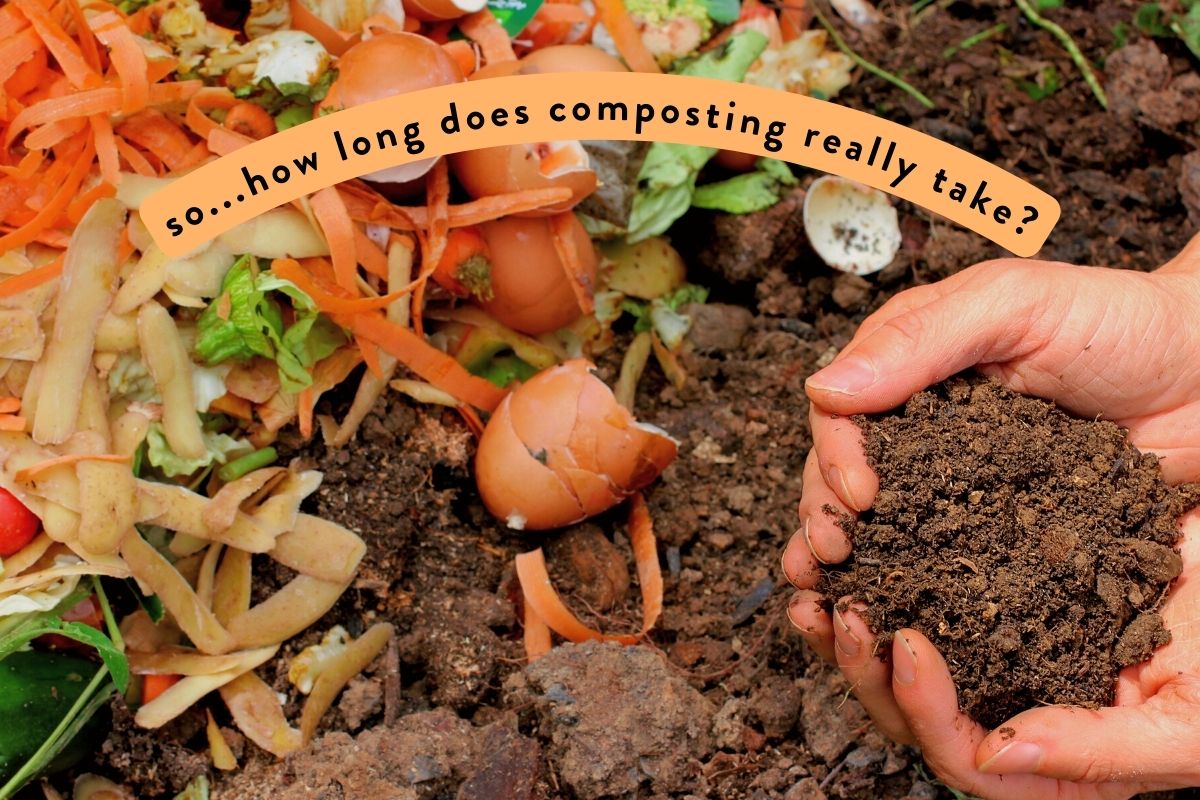Composting is a simple way to direct your food and yard waste towards something you can use in the garden or for your indoor plants, and there are several ways to do it! You can make a compost heap in the backyard, use a tumbler or homemade compost bin, or use a worm composting setup. The method you choose and how actively you manage the compost can make the process last at least anywhere between 6 to 12 weeks before you have usable compost.
how does composting work & what does compost do?
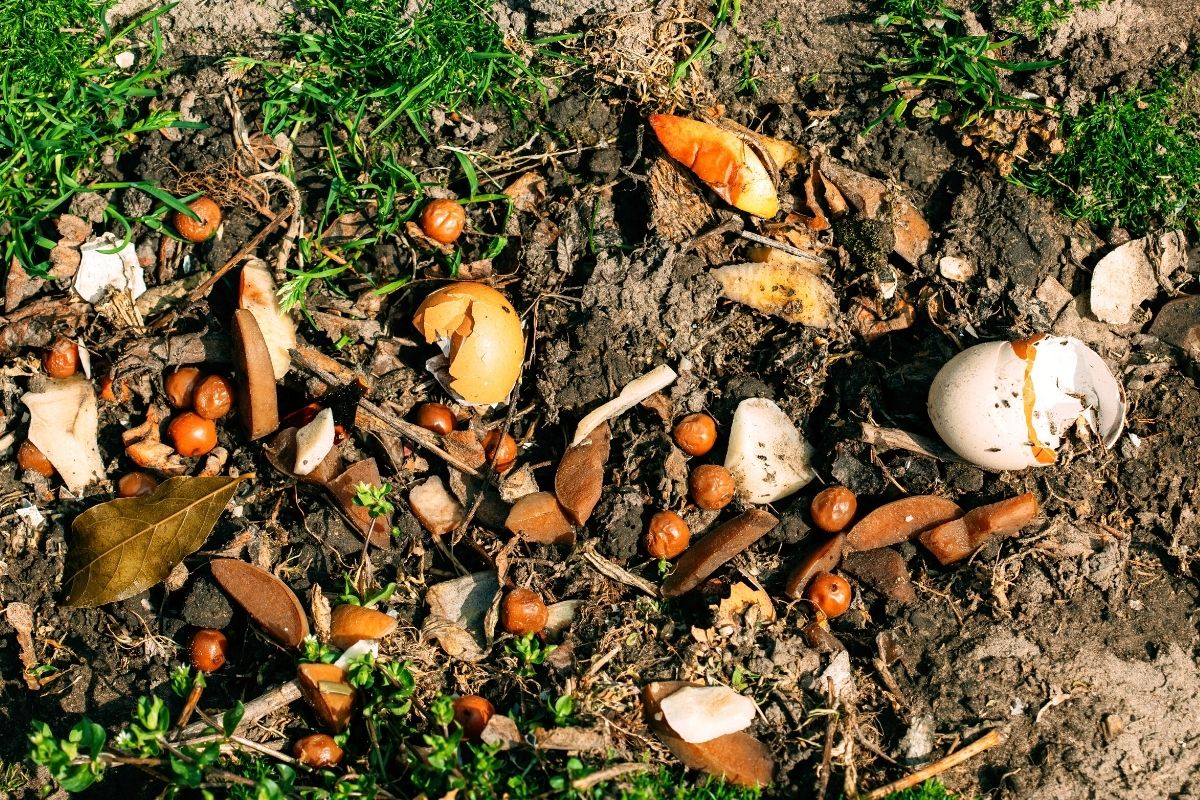
In a compost pile, the organic waste material is broken down by good bacteria and fungi, and other decomposers like worms (read our guide about how to compost at home for a full review of the composting process). The result of composting is a nutrient-dense fertilizer that can be added to soils to improve the porosity, moisture-retention, and drainage of soils that your plants live in.
Compost is mostly humus, the almost-completely decomposed organic material that contains the nitrogen, phosphorus, and other vitamins and minerals that plants need to grow strong and healthy. As the organic matter breaks down over time, the nutrients can be absorbed by a plant’s roots.
how long does it take for compost to break down?
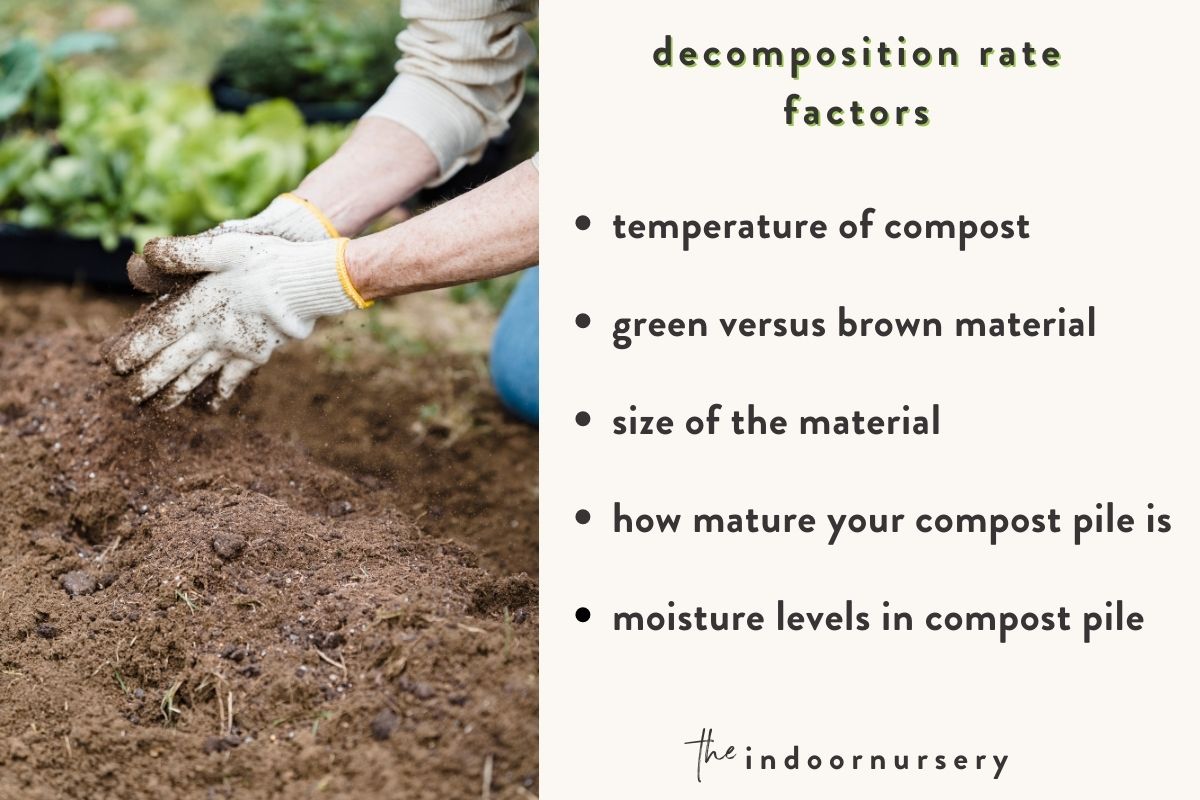
Various factors affect the decomposition rates in a compost heap. Like with any project, monitoring certain variables of the process will help it go along smoothly and produce the best result possible. These include the:
- Temperature of compost
- Green versus brown material
- Size of the material
- How mature your compost pile is
- Moisture levels in compost pile
temperature of compost
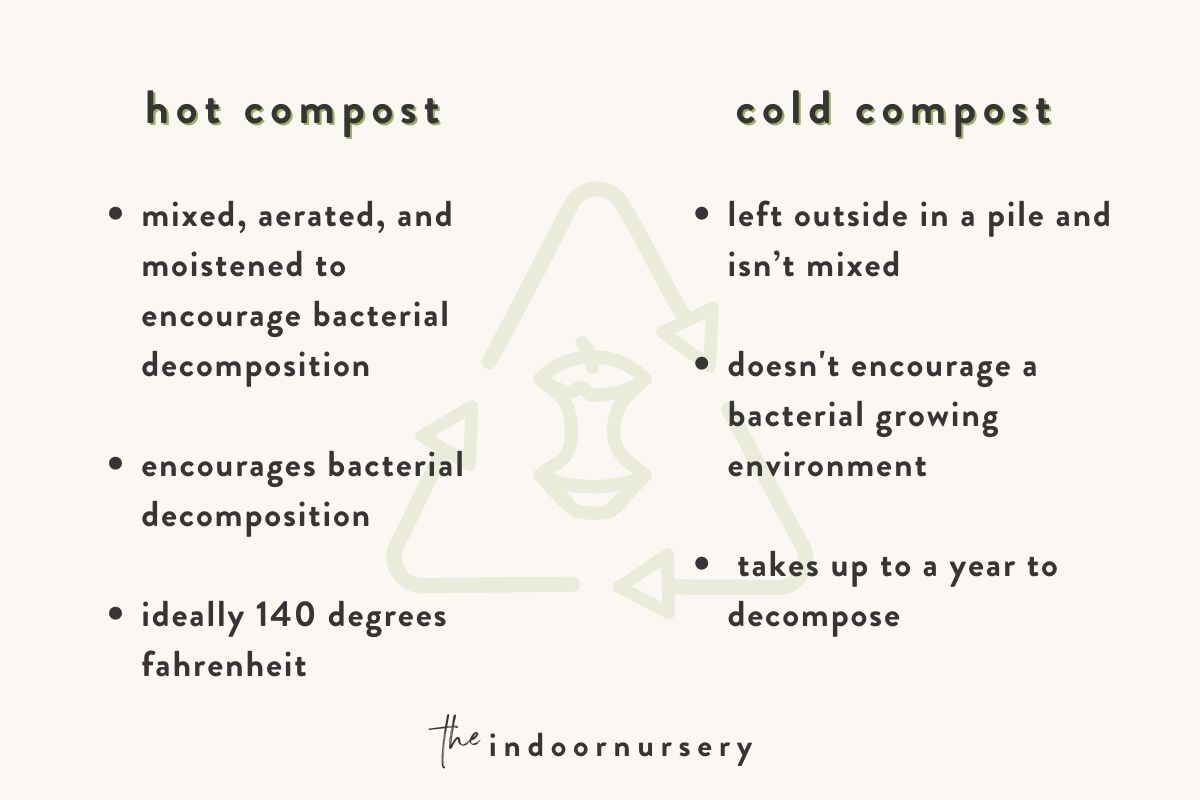
The temperature of the compost is an important result of successful “hot” compost (in contrast to “cold” composting, which doesn’t get managed the same way). Hot composting is when a compost mixture is mixed, aerated, and moistened to encourage bacterial decomposition. The high temperature is built from the bacteria giving off heat from breaking down the organic material. Cold composting, on the other hand, doesn’t heat up the same way because it’s left outside in a pile and isn’t mixed, so it won’t encourage a bacterial growing environment that heats up.
When your compost is hot, the ideal temperature is about 140 degrees Fahrenheit, and it can be measured with a compost thermometer.
A hot compost breaks down much faster than a cold one, in a matter of a few months, in comparison to cold compost, which takes up to a year to decompose undisturbed.
green versus brown material
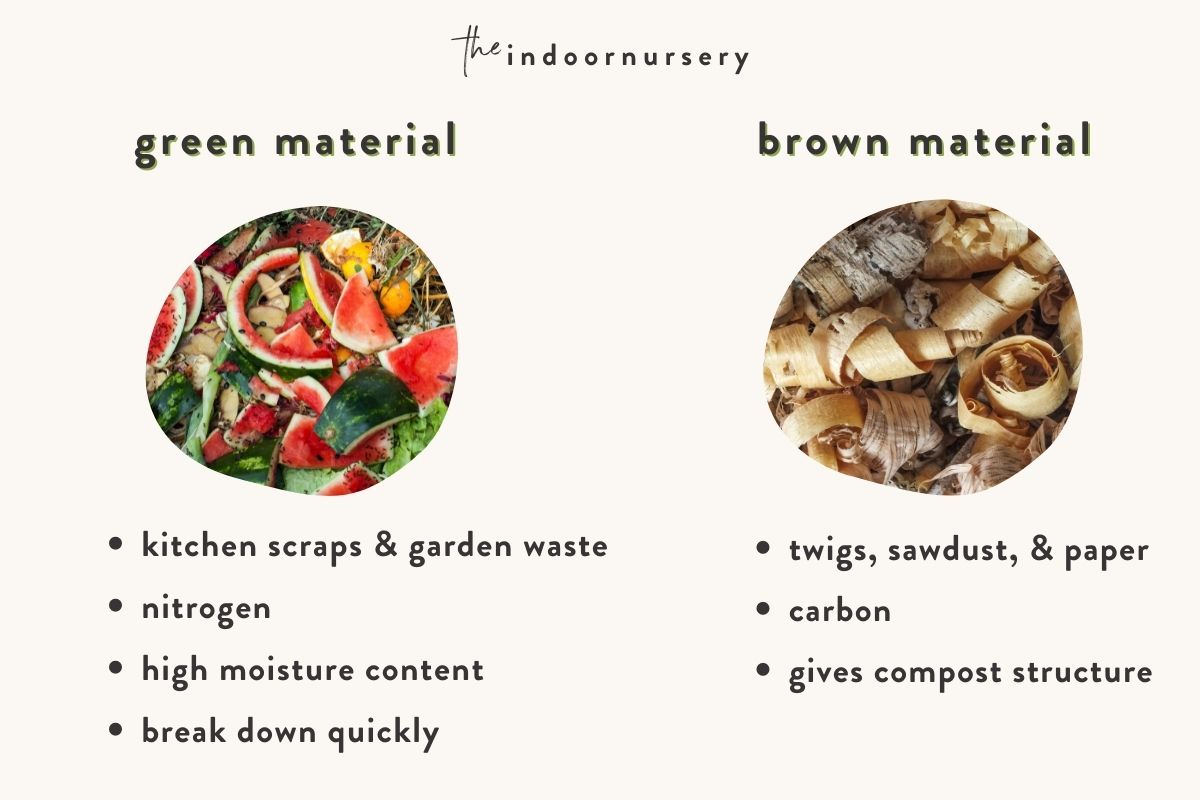
Having a good balance of green and brown materials in your compost is an important way to get the best result. Green materials include kitchen scraps and garden waste; these contain nitrogen, have high moisture content, and break down quickly.
Brown material is a source of carbon, which gives the compost its structure. Brown materials are dried out plant materials like
- leaves and twigs,
- sawdust,
- and paper (like cardboard).
The nitrogen in the green material feeds bacteria, which process and break down the organic material, releasing moisture and heat. The brown material, especially cardboard, absorbs much of that excess moisture and helps the compost from getting too wet. Many composters recommend layering green and brown, and always adding brown material when you add green to maintain a balanced 50/50 mix, with some composters recommending a little more brown than green.
the size of the material
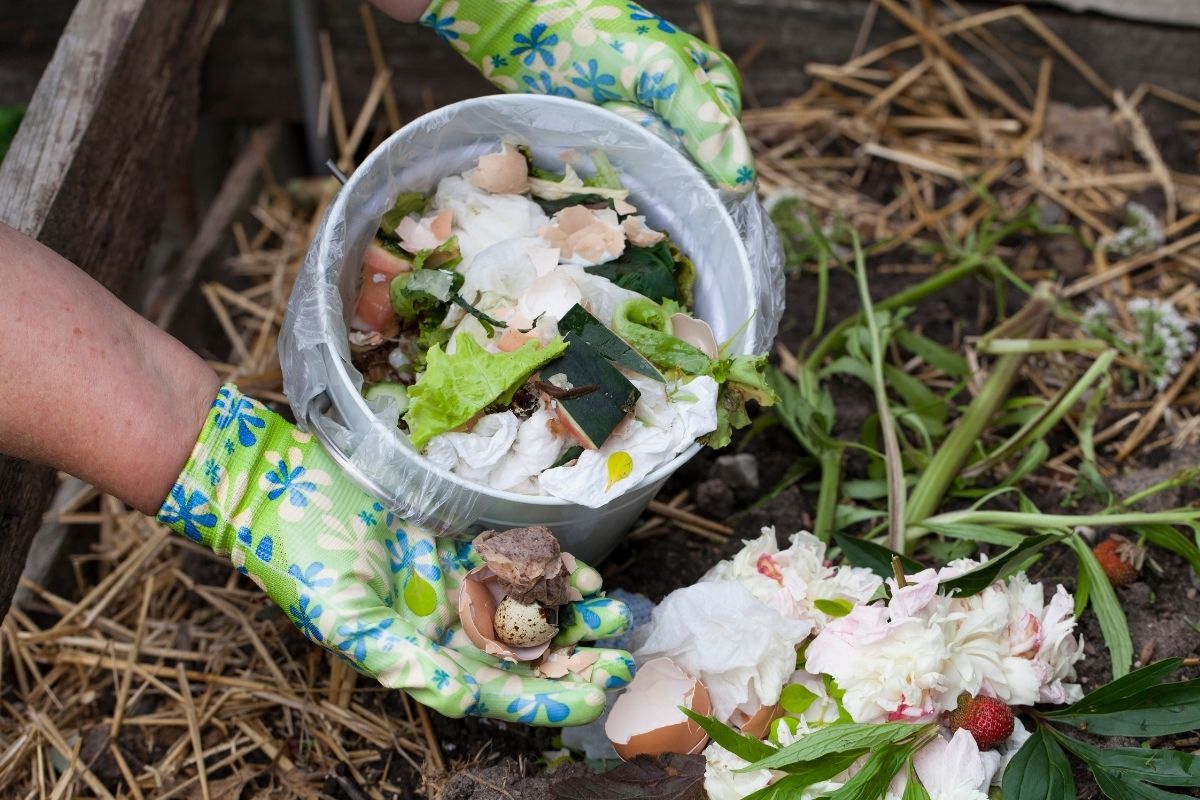
It’s important to not put too-large pieces of food or paper waste into your compost. Cutting them up into pieces smaller than 1 inch by 1 inch helps increase the surface area available to be decomposed; the smaller, the better! The bigger pieces are, the longer it takes to be broken down and evenly incorporated into the compost. Cutting, tearing, and blending all help the process move along most smoothly.
The size of your compost pile can make a difference as well: too little material won’t break down as well as a larger amount, since more material will host more bacteria, especially in the core of the mass of matter, which will also contribute to a faster process.
how mature your compost pile is
Composting has different phases of decomposition, which affect how the compost looks and what you need to do to manage the process. Depending on how many compost heaps you have and how soon you need to use the compost, you’ll have to stop adding to your compost bin to move it from one stage to the next before it’s able to be used in your indoor or outdoor garden. In the first stage of composting (over the first few weeks), bacteria are dominant, breaking down most of the green material.
The bacteria require a lot of oxygen, moisture, and mixing, which gives off a lot of heat. Eventually, when no new material is being added and all of the green has been broken down, fungi will take over as the main decomposer, breaking down the most durable materials like bark, wood, and stems. This is a slower phase, lasting several weeks, but it will result in the usable compost we’re after.
moisture levels in compost piles
The moisture levels in an actively-managed compost heap need to be maintained regularly for the first several weeks of the process by adding water as necessary. The mixture shouldn’t be too wet, but slightly moist, like a rung out cloth or sponge. The moist environment allows the bacteria to thrive and decompose the material. The bacteria need air as much as water, and without rotation, the compost will compact, liquids will settle, and the aerobic bacteria that we want to be present won’t be able to live. Instead, anaerobic bacteria that survive in compact, wet environments will dominate and rot the mixture. This can lead to flies that feed on the rotting material. On the other hand, a too-dry environment won’t allow the good decomposers to survive either.
ingredients for compost
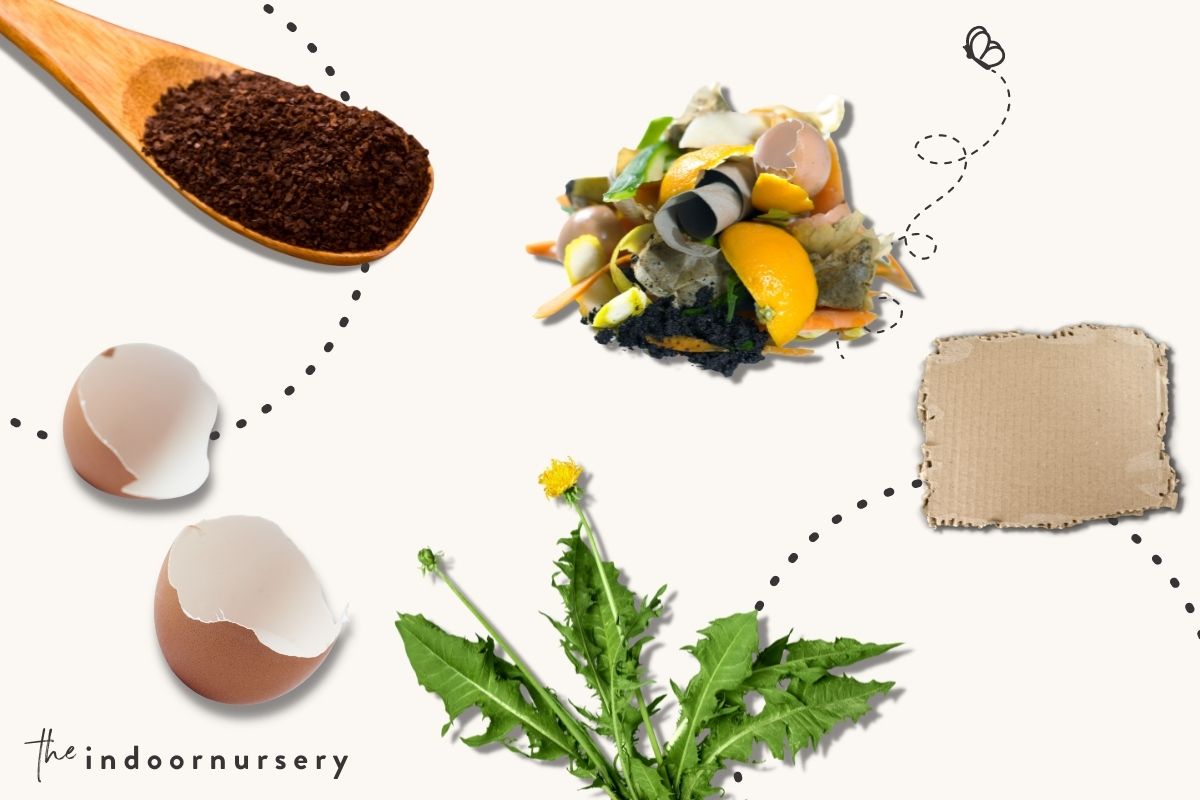
egg shells
Egg shells are a great source of calcium, potassium, phosphorus, and magnesium. They also add a gritty, coarse material that will break down slowly and contribute structure to the soil.
coffee grounds
Like egg shells, coffee grounds are wonderful material to build a dense compost to add to your soil. These add nitrogen, phosphorus, and potassium, as well as many micronutrients and minerals.
other food waste & kitchen scraps
Food waste is one of the best sources of nitrogen, micronutrients, and moisture for your compost. Fruits, vegetables, and any plant-based food without meat, dairy, or oil in them can be added to your compost. While eggshells are good additions to compost, bones aren’t.
cardboard
Cardboard is made of wood pulp and is an excellent source of material to add bulk to your compost. Make sure stickers and tape are removed, and the pieces are cut up into small scraps.
organic plant matter (leaves, twigs, grass cuttings)
Yard waste like lawn clippings and weeds can add green material to your compost, while dead leaves and twigs will add brown material. This helps you keep your yard’s products for use at home!
how to know when is compost ready
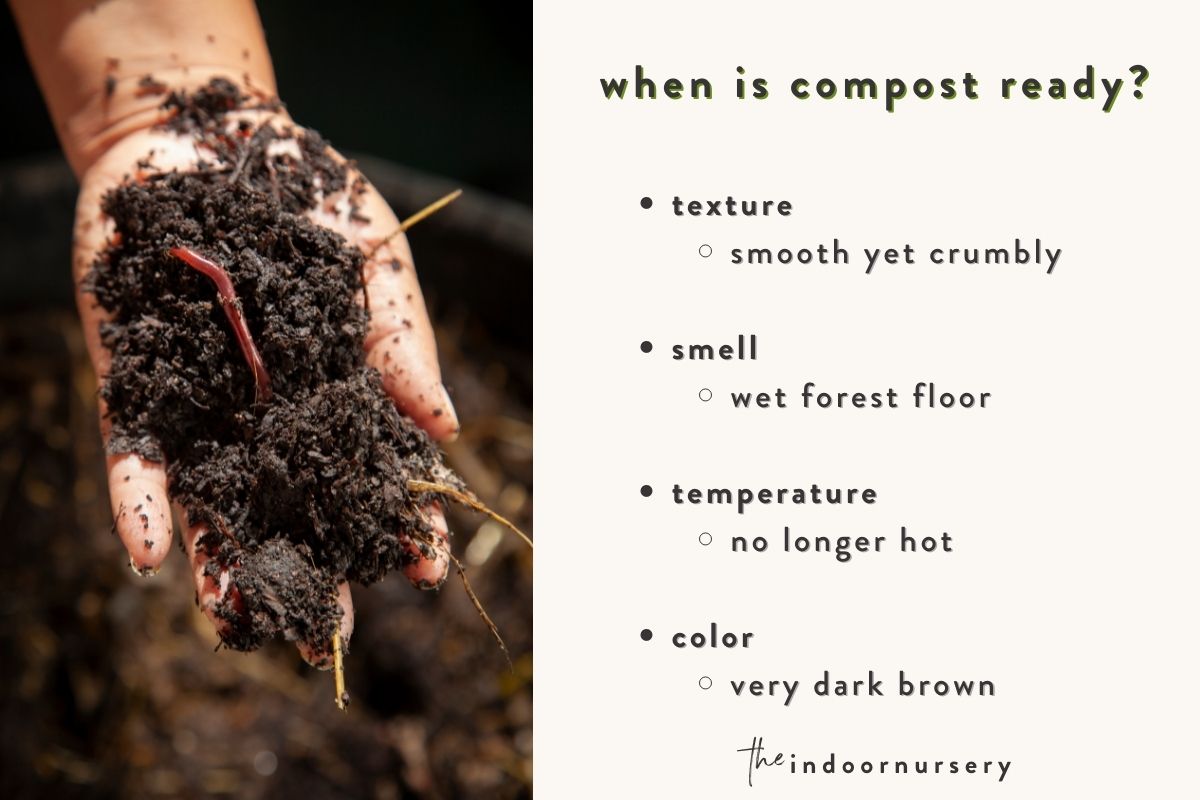
After a few months of decomposition, you can start inspecting the compost to see if it’s ready for use. There a few factors to consider:
- Texture: When you look at and touch the compost, it should have a smooth, yet crumbly and grainy texture with a fair amount of coarse material in it (like twigs, pieces of bark, or small scraps of unidentifiable organic material). These solid pieces will all be held together by the humus in the compost.
- Smell: Finished compost is going to smell like moist earth or a wet forest floor, rather than anything unpleasant. If your compost has a rotting smell, it likely was too wet and/or wasn’t mixed or aerated enough.
- Temperature: Compost that’s ready to use won’t be hot anymore like it was at the beginning of the decomposition process. Compost will be about the ambient temperature when it’s been mostly decomposed, and any ongoing decomposition will be a slower process that doesn’t give off much heat at all.
- Color: A compost heap that has been decomposed to the point that you can add it to your soil won’t have any color other than very dark brown, almost black. If there’s any sign of green, yellow, or any other color, it means there’s undecomposed material and the compost needs more time.
how to make compost faster
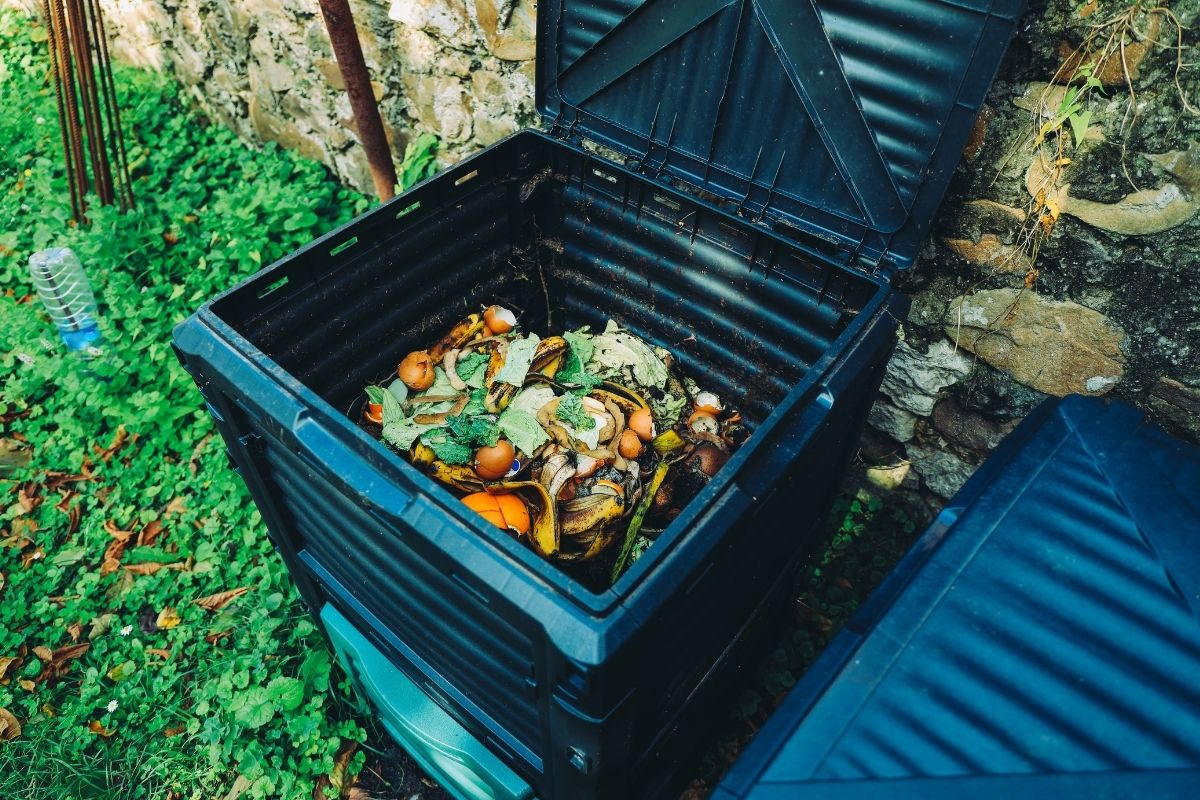
1. try an electric compost bin
Electric compost bins are a newer technology that are increasingly becoming available (we recommend the Lomi!) They break down food in a matter of hours by heating and grinding the material. This isn’t a true finished compost, but it’s a significant reduction in the overall time it takes to break down food. It’s important to use a big enough batch of food scraps for it to work properly. The resulting dirt-like substance should be diluted with potting soil in another bin and allowed to continue to decompose for a couple more weeks before adding it to your indoor or outdoor gardens. Since these can be used once a week or once a day depending on your food waste load, they’re great for individuals or a large family.
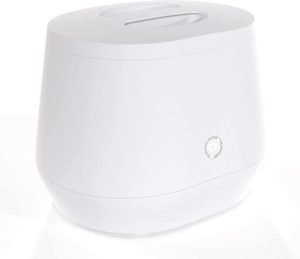
2. use a worm compost bin
Food and yard waste will decompose naturally by bacteria, but worms are an added level of decomposition that can speed things along. Outdoors, will find their way into a compost pile, but for indoor worm composting, you can have a dedicated bin or tower. Worm towers, like the Worm Factory 360, are a composting method that uses red worms to break down food scraps in a layered tray setup that provides you with two forms of compost: a solid and a liquid. The liquid, known as worm tea or leachate, is the drained liquid from the solids, and it contains lots of nutrients. It should be diluted with water before adding to your plants, or it may be too salty or acidic (easy on the citrus in these!), and therefore toxic. When raising worms, be mindful not to add too much food at once so it doesn’t rot. Feedings shouldn’t be more than once a week, and they should be spaced out in a way that the last batch is decomposed and finished up before adding anything new.
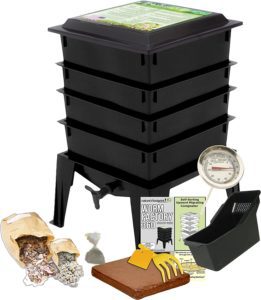
3. use compost accelerators
Adding a compost accelerator to your compost is an easy way to speed up the decomposition process. These products, like Green Pig 60, contain beneficial bacteria that accelerate the composting process. The dried bacteria are revived when added to the wet, nutrient-rich environment, speeding the process up from several months to just a few weeks. Be sure to follow the directions to use the right amount for your compost load.
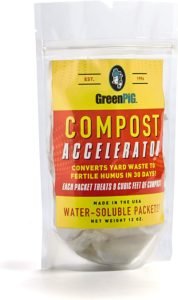
4. shred or break down material first
The smaller the pieces of scrap food or yard waste, the faster it will be broken down. Chopping or cutting up food scraps, or blending them, will increase the ease of decomposition by bacteria. The more surface area there is, the easier it can be decomposed. Shedding pieces of cardboard and using sawdust and pine pellets helps add carbon bulk that is broken down quickly while bark, twigs, and other more dense materials will take longer to break down.
5. turn compost regularly
Turning over and mixing up compost regularly is important for the hot compost method to be successful. The heap needs to be aerated for the oxygen-breathing bacteria to survive. If you have a compost pile in your yard, using a pitchfork at least once a week will keep things aerated. Using a tumbling composter is one of the easiest ways to make sure your compost stays aerated and well-mixed (we recommend this one by Vivosun!)
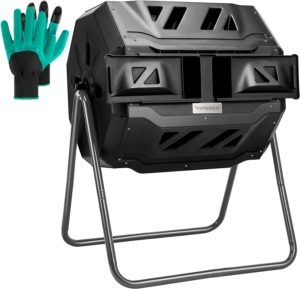
common questions
does compost turn into soil?
Compost is mostly decomposed organic material, a substance known as humus, which does make up a large bulk of soil. In nature, soil is a mixture of decaying organic materials and sand, clay, silt, or a mixture of those from a location’s bedrock. When we make compost at home, it needs to have coarse materials like sand, gravel, perlite, bark, coco coir, or any of the other soil amendments that make it a supportive growing environment for your particular plants. Pure compost soil will become compacted, hold too much moisture, and can burn and/or suffocate your plant’s roots if it isn’t diluted with other soil materials.
does compost need sun?
Compost doesn’t need to be in the sun to decompose, although the heat of the sun may help the process by keeping compost heaps warm. An uncovered pile outdoors may get dried out by the sun, but a large enough pile will maintain its internal moisture content. Covered compost bins that are outdoors will easily retain their moisture when heated up by the sun.
what does compost look like when it’s ready?
When compost is ready to use, it will be a dark brown to black color with a crumbly texture, while also having a smooth, yet gritty consistency. It will be slightly moist, but not wet, and it may have a range of materials, from twigs, to stems, to pieces of bark, but for the most part, the coarse material won’t be identifiable.
how long does it take for cardboard to decompose?
Cardboard will take several months to decompose on its own, but when it’s in your compost mix, it will break down over a few months, and should be mostly unidentifiable by the time the compost is ready to use. The liquid from the plant material and water will be soaked up by the cardboard, speeding along its process, but since it’s brown material (carbon), it forms a solid bulk that takes longer to break down than the green plant material.
how long does it take leaves to decompose?
When you rake up dead leaves, they are a great source of brown material to add to a batch of compost. These leaves take longer to break down than living leaves or grass clippings since they have lost their nitrogen-rich chlorophyll, which feeds the decomposer-bacteria. The remaining fibrous material of dead leaves takes a few months to break down in a compost heap, and will provide some of the bulk for the end product.
how long does it take food scraps to decompose?
The range of food scraps added to a compost heap will have different breakdown times, from a few weeks to a few months. Lettuce leaves and cut-up banana peels will decompose more quickly than intact apple cores or large pieces of eggshell.
more about composting
- 10 Best Worm Composter Bins For Easy Homemade Compost
- Compost Starter 101: When You Need It And How To Make It
- How to make a DIY indoor worm composting bin in 4 steps
- What to do with extra scoby (hint: it’s good for the soil)
- Vermicomposting for beginners: how to compost indoors for happy plants
- How to use worm castings for happy plants
- How to make worm casting tea in 4 easy steps
- Here’s how to harvest worm castings
- how to use compost accelerator for faster composting
- how long does compost take to turn into nutritious soil? it depends
- Tags:
- composting

